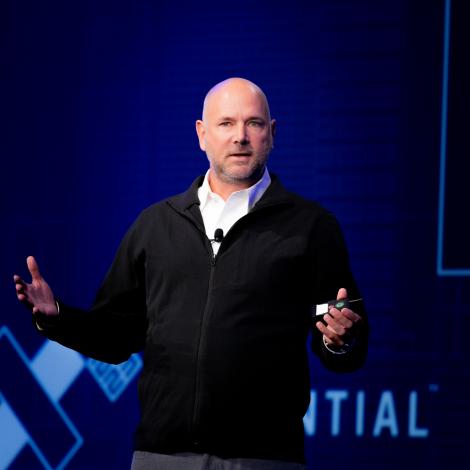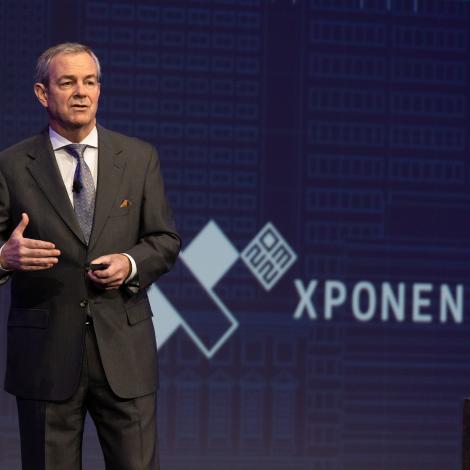A Path Towards Advanced Aviation
XPONENTIAL 2023 Keynote Remarks: Acting FAA Administrator Billy Nolen (April 1, 2022 – present)
---
Thank you, Brian [Wynne], and good morning, everyone.
Thanks to AUVSI for helping set the vision, and chart the course, for advanced aviation. You’re helping usher in the next era for this industry.
Suddenly, we can do things that once only existed in the minds of science fiction writers.
Aviation is home to many of these breakthroughs. Things like flight itself. Or breaking the sound barrier. Think about this: We broke through the speed of sound in 1947, and just a couple of decades later, we were on the way to the moon at faster than Mach 20.
The story didn’t end there. This generation saw space and commerce together. The area of upper atmosphere is within the reach of people like you and me. Believe me when I tell you, I want to fly one of those spacecraft real, real bad. But that’s a story for another day.
I’m here today because the reality of drones and AAM are much closer than we thought.
But before this vision can be fully realized, a lot of work must be done.
Last week, the FAA announced a new Blueprint to make AAM a reality. It outlines how we are going to integrate air taxis into the airspace.
And later this month, we expect to release the FAA’s AAM Implementation Plan. This robust plan will show how all the pieces come together, allowing industry to scale safely.
If you’re looking for the code to the front door of the next generation of aviation, here it is. These documents are a hard look at what it’s going to take to have an air taxi safely take you where you need to go.
For both drones and AAM, we have to make progress on several — what I call — “key enablers.” And we have to integrate these enablers in a holistic way, on a global basis.
Let’s start with the need to ensure safety. The public expects nothing less than the highest levels of safety in aviation, no matter where in the world they fly. And they will expect the exact same thing for drones and AAM operations.
All it takes is one major accident — or even some close calls — to erode public confidence.
The FAA is working diligently to tailor safety regulations and standards for advanced aviation. And we’re committed to doing it in a way that won’t stifle the rapid advances this industry continues to make.
With drones, we’ve made good progress over the past few years. We’ve enacted the Remote ID rule, and the Operations over People rule.
But to unleash the full potential of drones, we need to enable routine operations beyond the pilot's visual line of sight.
We know that some in industry think we’re not moving fast enough on BVLOS.
During my year leading the FAA, we have started to fix this. Last year, we issued the first type certificate for Matternet.
But our pace is dictated by the need to ensure safety. We won’t compromise safety, no matter what the technology is.
Completing BVLOS is a top priority for all of us, and we’re in the early stages of developing the rule. We’ve received a lot of input from stakeholders, and the public, over the past year.
Our initial focus is on normalizing standard operations for BVLOS flights at low altitudes. This will enable drone use for functions like infrastructure inspections and agricultural operations.
Then we need to clear the way for more tailored approval paths for package delivery, and figure out the best approach to integrate operations into more complex airspace.
We don’t yet have a date for when we will issue a Notice of Proposed Rulemaking. But once that happens, we look forward to receiving more feedback from the public.
As industry and the FAA continue to better understand the capabilities of drones, and the safety risk mitigations necessary to fly them, we expect waiver requests to increase.
And that’s good news. These waivered operations will provide us with more valuable information to ultimately shape our safety rules and integration efforts.
And when it comes to Advanced Air Mobility, we expect to see great demand for these operations by the time the Los Angeles Olympics take place in 2028.
The FAA has issued the certification basis for two eVTOL aircraft by companies, Joby and Archer. And we expect to issue the first eVTOL airworthiness certificate by the 3rd quarter of 2024, as long as safety permits.
And by that time, the FAA expects to complete the standards that pilots must meet to operate the first generation of AAM aircraft.
Of course, these are complex vehicles – with characteristics of both a helicopter and a fixed-wing aircraft.
Personally, I have thousands of hours flying both helicopters and commercial jet liners. So, I have a keen understanding of the various piloting skills needed to operate aircraft with these characteristics.
I was also an airline training captain, and I can tell you that the training must be rigorous to master the skills necessary to safely operate these aircraft.
But establishing safety rules and pilot standards are just the beginning of a longer journey. Another key enabler is going to be developing the infrastructure, and changes to airspace, both in the U.S. and around the world.
The Blueprint we released last week outlines the next steps toward initial and long-term airspace integration. We expect that initial AAM vehicles will use existing infrastructure such as helipads, routes, and air traffic control services where possible.
As operations increase, these vehicles could fly in corridors where operators could be responsible for keeping aircraft safely separated using industry-developed, FAA-approved rules.
We know that, ultimately, industry wants to get to a place where these vehicles can operate autonomously. NASA is doing some great work with their Data and Reasoning Fabric – a model for enabling data connectivity. DRF would build logic into decision-making tools to enable safe flight operations for autonomous drones.
Of course, advanced aviation companies seek to operate across the globe. So, the next key enabler involves establishing a common regulatory framework around the world.
The FAA is working with our European counterparts through our existing agreements. And we’re working with the UK, Canada, Australia, and New Zealand, as well as Japan and South Korea, on ways to align our certification processes and standards for AAM aircraft.
In everything we do – safety rulemaking, airspace integration – it’s essential that we think of advanced aviation in a holistic way, and engage each other proactively.
So, the FAA is hosting a Drone Symposium, in concert with an AAM Summit, during the first week of August.
These forums will give us a chance to identify challenges early, and develop solutions together. This will help us ensure safety, while giving maximum thrust to the great progress industry is making.
I know it will be a productive set of meetings, even though by that time, I will no longer be serving as the FAA’s acting Administrator. As some of you may know, I’ve announced my departure from the agency over the summer.
I can’t help but think back to the early days of my career, when I stepped into a small helicopter in the Army, to seeing where we are today, with the excitement and challenge of a new era in aviation.
I’m honored to have helped lead the safety and integration efforts for this new era. And to have been a part of bringing about the resulting benefits to the public.
And I’m looking forward to seeing how things come together over the next few years and beyond.
Thank you, and I hope you have a fun and productive XPONENTIAL.






